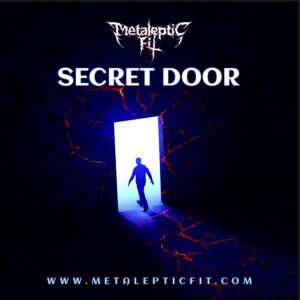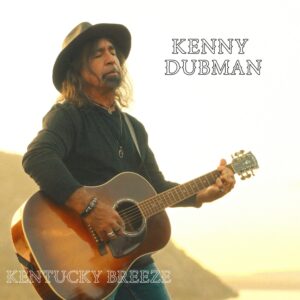
The following blog post, unless otherwise noted, was written by a member of Gamasutras community.
The thoughts and opinions expressed are those of the writer and not Gamasutra or its parent company.
By Winifred Phillips | Contact | Follow
Hi! I’m videogame composer Winifred Phillips. I’m happy to welcome you back to the last of my four-part article series exploring how game music can best enhance the sensation of presence in Virtual Reality! These articles are based on the presentation I gave at this year’s Game Developer’s Conference in San Francisco, entitled How Music Enhances Virtual Presence (I’ve included the official description of my talk at this end of this article). If you haven’t read the previous three articles, you’ll find them here:
In my GDC talk, I discussed Virtual Presence in connection with seven of the virtual reality games and experiences that I’ve scored, which have either released within the past year or will be released within the coming months. These include Audioshield (Audiosurf LLC), Bebylon Battle Royale (Kite & Lightning), Fail Factory (Armature Studio), The Haunted Graveyard (Holospark), Life Hutch VR (Next Stop Willoughby), Scraper: First Strike (Labrodex Inc), and Shattered State (Supermassive Games). Over the course of these four articles, we’ve been looking at how game music can most effectively assist in creating mental states that promote Virtual Presence. We’d previously looked at ways in which music accomplishes the following three tasks:
Music empowers Flow.
Music promotes psychological attachment.
Music provides an avenue for mood attenuation.
 In our first article we examined how Flow Theory relates to Virtual Presence. In the second and third articles, we considered how engagement, engrossment and empathy can create the right circumstances for players to feel fully enveloped in an awesome virtual world, reinforcing the psychological attachment that helps to support and enable Virtual Presence. So now, let’s look at the third mechanism wherein music enables Virtual Presence:
In our first article we examined how Flow Theory relates to Virtual Presence. In the second and third articles, we considered how engagement, engrossment and empathy can create the right circumstances for players to feel fully enveloped in an awesome virtual world, reinforcing the psychological attachment that helps to support and enable Virtual Presence. So now, let’s look at the third mechanism wherein music enables Virtual Presence:
Mood Attenuation
As game music composers, it’s important that we maintain a firm grasp of the emotional undercurrents in the game – not only because they can help to increase Virtual Presence, but also because some emotions have the potential to interfere with it. Case in point: in a study published in the Journal Presence, computer scientist David Nunez of the University of Capetown investigated how music influences Virtual Presence. He directed study subjects to explore a virtual environment while hearing music of differing styles. The music included both positive and negative emotional states. Nunez found that during negative emotions, the sensation of Virtual Presence dropped. Likewise, during positive emotions, Virtual Presence increased.
 What does this mean for us as game music composers working in virtual reality? It may mean that we should keep a close watch on the overall emotional arc of our musical scores in VR, looking for the top opportunities to attenuate those emotions if they’re growing too dark for too long.
What does this mean for us as game music composers working in virtual reality? It may mean that we should keep a close watch on the overall emotional arc of our musical scores in VR, looking for the top opportunities to attenuate those emotions if they’re growing too dark for too long.
For instance, at one point during the Life Hutch VR game, players climb into the cockpit of a fighter ship and hurtle into a frantic space battle against a relentless enemy. In discussing musical choices for this battle, the project director and I decided that instead of focusing on the hopeless odds and the desperation, we’d inject a more neutral sense of determination and competence into the music. This meant that the space battle provided a break from the surreal mood that colors the rest of the game. Let’s see what that was like:
As you can see, interjecting breaks from otherwise dark emotional textures can be a great choice within the body of a narrative structure, and can also help to support Virtual Presence for players.
It’s clear that the psychology of Virtual Presence can be tenuous to maintain, and there are also some drawbacks to be considered. Let’s take a moment to think about one way in which Virtual Presence itself may possibly hinder player enjoyment and success.
Event Boundary
 Have you ever walked into a room and then thought – why did I come in here? What was I going to do here? What was I looking for? You stare blankly around the room for a moment or two, and then bang! You remember. Oh! That’s what I came in here for! Well, that annoying interval of perfect confusion is also a famous psychological effect, popularly known as The Event Boundary phenomenon, as discovered by psychology professor Gabriel Radvansky of the University of Notre Dame.
Have you ever walked into a room and then thought – why did I come in here? What was I going to do here? What was I looking for? You stare blankly around the room for a moment or two, and then bang! You remember. Oh! That’s what I came in here for! Well, that annoying interval of perfect confusion is also a famous psychological effect, popularly known as The Event Boundary phenomenon, as discovered by psychology professor Gabriel Radvansky of the University of Notre Dame.
It seems that as human beings, we tend to organize our memories according to our location. When we move through any kind of passage or doorway leading from location 1 to location 2, our brains decide that we’re done with whatever we were thinking about in location 1. That info gets filed away, and when we try to remember it in location 2, it’s not readily available.
When exploring locations in video gaming, we never had to worry about event boundaries – because we were sitting in front of a screen. But with Virtual Presence, we don’t feel like we’re sitting in front of a screen. We feel like we’re actually wandering about, so it’s possible to get confused when going from place to place – to forget objectives, to wonder what we’re doing and why we’re doing it. That’s bad for gameplay, and it’s bad for players. So how can we counteract the effect?
 Music can go a long way to help players. Having music maintain a constant identity while following players through passages and doorways can help keep players focused.
Music can go a long way to help players. Having music maintain a constant identity while following players through passages and doorways can help keep players focused.
In the Scraper: First Strike VR shooter from Labrodex Studios, players are given missions to accomplish within sprawling skyscrapers chock-full of passageways and doors.
The music I composed for Scraper: First Strike establishes a steady tone and atmosphere that follows players as they explore – bridging divides, and hopefully staving off any negative effects from the event boundary phenomenon.
Let’s take a quick look at how that works:
Conclusion
Virtual Presence is an elusive prize, and one that expert VR studios will continue to pursue as virtual reality development progresses and becomes more sophisticated over time.
 During this four-article series we’ve taken a look at how music can help to enhance and support the sensation of Virtual Presence. We’ve explored what Virtual Presence is, and why it’s important in VR gaming. We’ve discussed Flow Theory, and how Flow can help players to become more fully engaged in a virtual environment. We’ve looked at an interesting three-stage model of psychological attachment that can work to enable Virtual Presence. We’ve explored how mood attenuation can allow video game composers to assist players in maintaining their Virtual Presence. And finally, we’ve considered that Virtual Presence itself may introduce some negative gameplay effects in the form of the event boundary phenomenon, and we’ve conjectured on possible solutions that music can provide to solve that problem.
During this four-article series we’ve taken a look at how music can help to enhance and support the sensation of Virtual Presence. We’ve explored what Virtual Presence is, and why it’s important in VR gaming. We’ve discussed Flow Theory, and how Flow can help players to become more fully engaged in a virtual environment. We’ve looked at an interesting three-stage model of psychological attachment that can work to enable Virtual Presence. We’ve explored how mood attenuation can allow video game composers to assist players in maintaining their Virtual Presence. And finally, we’ve considered that Virtual Presence itself may introduce some negative gameplay effects in the form of the event boundary phenomenon, and we’ve conjectured on possible solutions that music can provide to solve that problem.
I hope you’ve been inspired by these ideas, and that you’ll put some of them to work in your own projects. Virtual Reality is a bold new frontier in game development, and it offers us brand new creative opportunities. Achieving Virtual Presence is one of the main goals of our work in VR, but it presents a significant challenge. As game developers, we’ll need to employ every trick of science and artistry to convince players that they’re truly present in an alternate world – and music can be a powerful tool to accomplish that. Thanks for reading!
How Music Enhances Virtual Presence

(Game Developers Conference Session Description)
Virtual Presence is defined as a state in which gamers fully accept the virtual world around them and their existence within it. This talk, “How Music Enhances Virtual Presence,” will explore how highly effective game music can enhance the sensation of Virtual Presence in VR gaming.
The talk will begin with an exploration of both the Flow Theory of Mihaly Csikszentmihalyi and the research of Dr. Paul Cairns on psychological engagement in video gaming. By understanding how the mental activity of players interacts with the way a game is designed, composers can create music intended to induce psychological states conducive with the formation of Virtual Presence.
The talk will include a discussion of techniques aimed at drawing attention to mission objectives, facilitating effective concentration, enhancing emotional empathy and intensifying player focus. The discussion will also include an exploration of some inherent drawbacks to Virtual Presence, including its fragility when exposed to negative emotional states, and its possible susceptibility to inducing the “event boundary” phenomenon. Musical solutions to these problems will be explored.
Phillips’ talk will offer techniques for composers and audio directors who seek to employ music as a tool to enhance Virtual Presence for their players.
Takeaway
Using examples from several games, Phillips will explore how music can influence the mental states of players through specific effects documented in scientific research. Study data will be discussed in regards to the interaction between music and cognition. Phillips will offer strategies and tips for composers seeking to use their music to influence the player’s mental state, thus facilitating the formation of Virtual Presence.
Intended Audience
This session is intended to inspire and stimulate composers seeking to employ their music towards enhancing player engagement and enjoyment, with a particular emphasis on VR games. Includes overview of Flow Theory and the psychological components of Virtual Presence, which may be useful to other disciplines within game development. Talk will be approachable for all levels (advanced composers may better appreciate the specific composition techniques discussed).
 Popular music from composer Winifred Phillips’ award-winning Assassin’s Creed Liberation score is currently being performed live by a top 80-piece orchestra and choir as part of the Assassin’s Creed Symphony World Tour, which kicked off in June 2019 with its Paris premiere. As an accomplished video game composer, Phillips is best known for composing music for games in five of the most famous and popular franchises in gaming: Assassin’s Creed, LittleBigPlanet, Total War, God of War, and The Sims. Phillips’ other notable projects include the triple-A first person shooter Homefront: The Revolution, and numerous virtual reality games, including Sports Scramble, Audioshield, Scraper: First Strike, Dragon Front, and many more. She is the author of the award-winning bestseller A COMPOSER’S GUIDE TO GAME MUSIC, published by the MIT Press. As a VR game music expert, she writes frequently on the future of music in virtual reality games. Phillips’ is a sought-after public speaker, and she has been invited to speak about her work as a game composer at the Library of Congress, the Game Developers Conference, the Audio Engineering Society, the Society of Composers and Lyricists, and many more.
Popular music from composer Winifred Phillips’ award-winning Assassin’s Creed Liberation score is currently being performed live by a top 80-piece orchestra and choir as part of the Assassin’s Creed Symphony World Tour, which kicked off in June 2019 with its Paris premiere. As an accomplished video game composer, Phillips is best known for composing music for games in five of the most famous and popular franchises in gaming: Assassin’s Creed, LittleBigPlanet, Total War, God of War, and The Sims. Phillips’ other notable projects include the triple-A first person shooter Homefront: The Revolution, and numerous virtual reality games, including Sports Scramble, Audioshield, Scraper: First Strike, Dragon Front, and many more. She is the author of the award-winning bestseller A COMPOSER’S GUIDE TO GAME MUSIC, published by the MIT Press. As a VR game music expert, she writes frequently on the future of music in virtual reality games. Phillips’ is a sought-after public speaker, and she has been invited to speak about her work as a game composer at the Library of Congress, the Game Developers Conference, the Audio Engineering Society, the Society of Composers and Lyricists, and many more.
Follow her on Twitter @winphillips.






